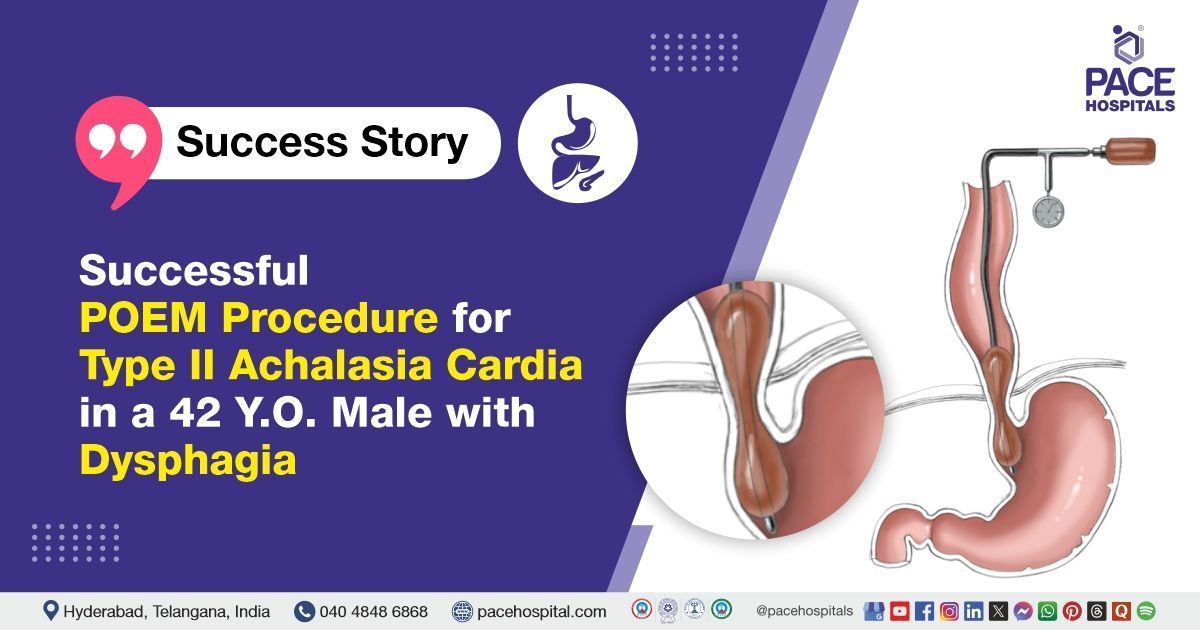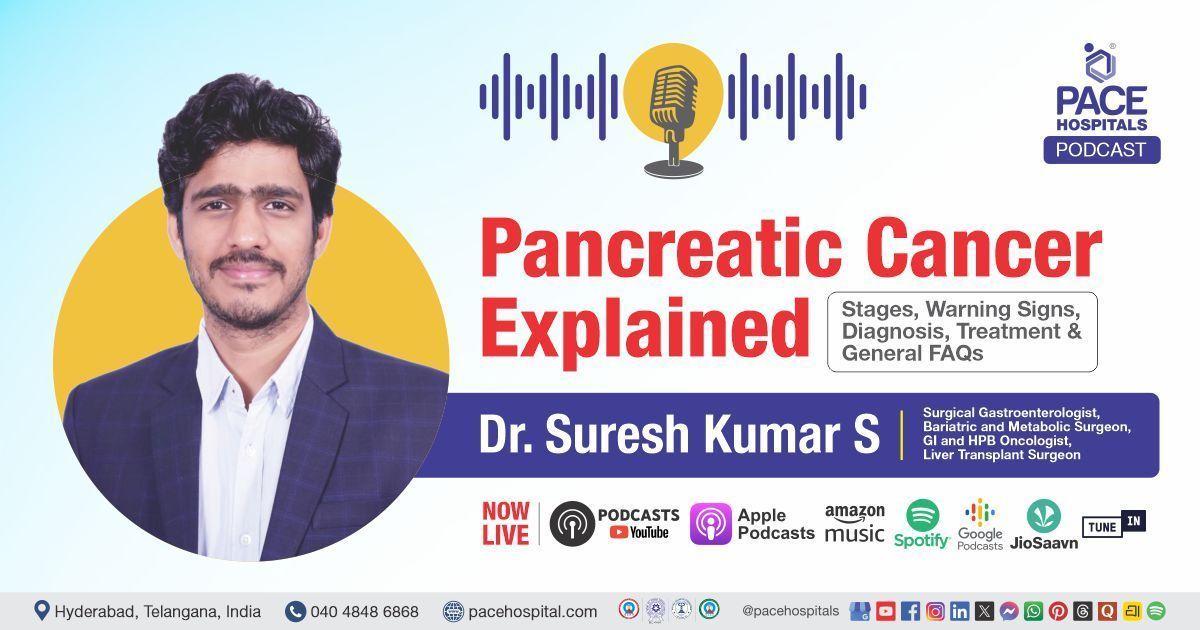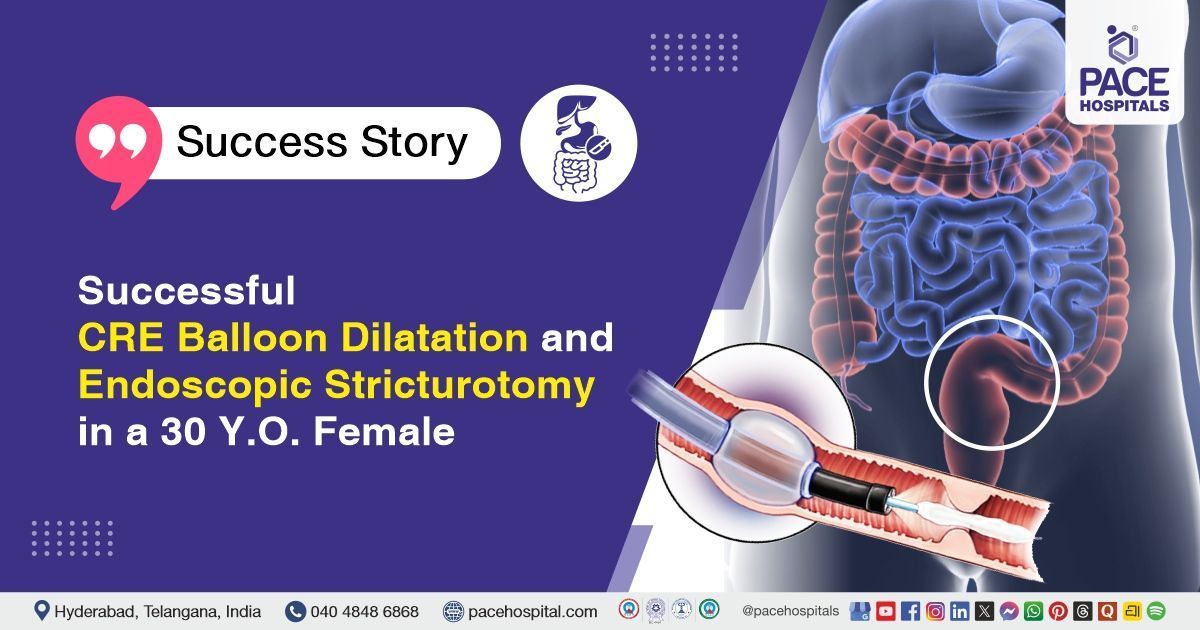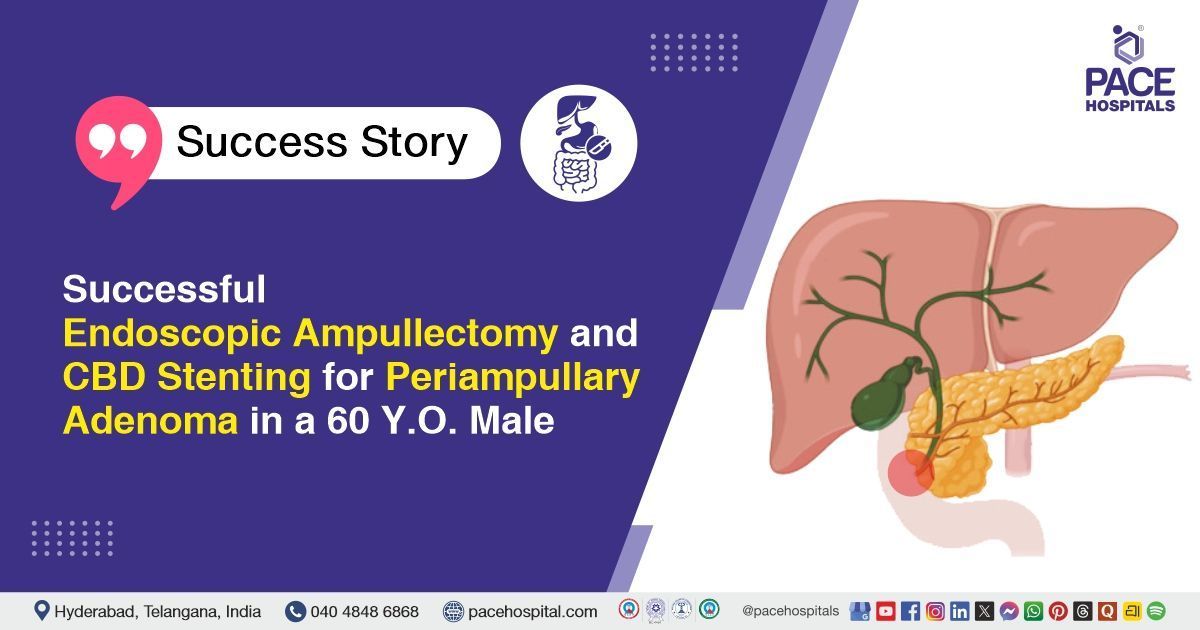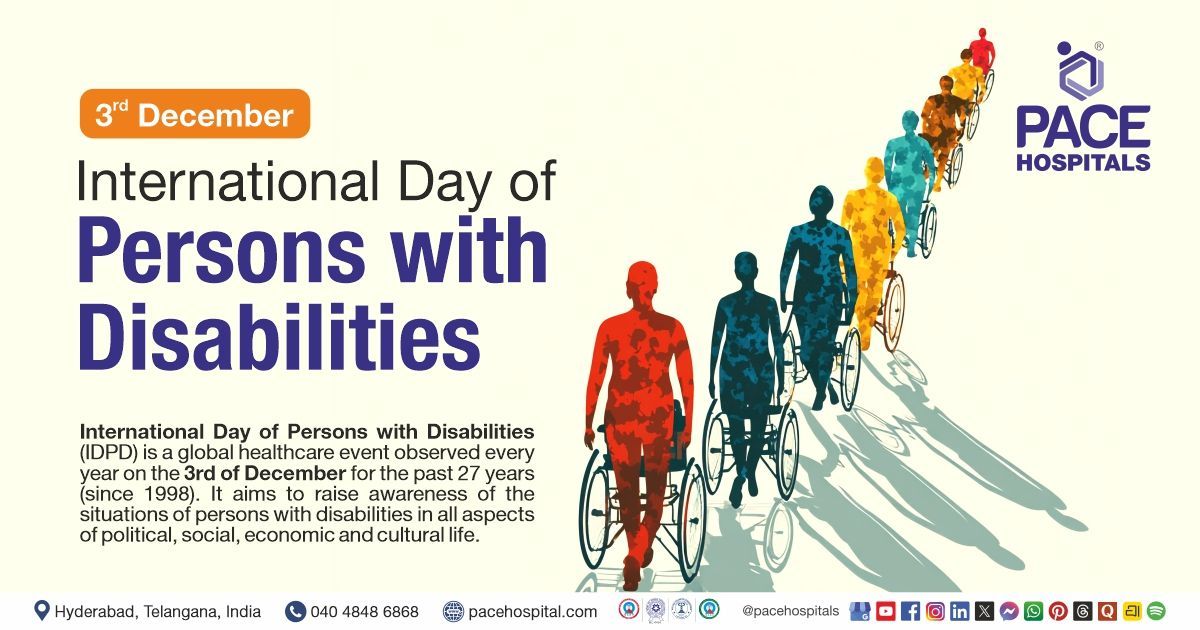Successful POEM Procedure for Type 2 Achalasia Cardia in a 42-Y.O Male with Dysphagia
PACE Hospitals
The PACE Hospitals' expert gastroenterologist team successfully performed a Peroral Endoscopic Myotomy (POEM) on a 42-year-old male patient diagnosed with type 2 achalasia cardia, who had presented with dysphagia to solids and liquids for 2 months. The procedure aimed to relieve his swallowing difficulties by relaxing the muscles of the lower esophagus, thereby improving his ability to swallow and addressing the underlying cause of his condition.
Chief Complaints
A 42-year-old male patient with a
body mass index (BMI) of 21 presented to the Gastroenterology Department at
PACE Hospitals, Hitech City, Hyderabad, with a chief complaint of dysphagia to both solids and liquids for the past 2 months.
Past Medical History
The patient had no known history of hypertension or diabetes. The absence of these comorbid conditions was considered clinically favorable, as it minimized the risk of intraoperative and postoperative complications and supported a smoother, more stable recovery.
On Examination
On physical examination, the patient was conscious, coherent, and well-oriented to time, place, and person. Vital signs were within normal limits. Respiratory examination revealed clear breath sounds bilaterally with no wheezing, crackles, or other abnormal findings. Cardiac examination showed a regular rate and rhythm with no murmurs, gallops, or additional sounds. Systemic examination, including abdominal assessment, revealed a soft, non-tender abdomen without any palpable masses or signs of discomfort, consistent with his gastrointestinal complaints but showing no evidence of acute abdominal pathology.
Diagnosis
Upon admission to PACE Hospitals, the patient underwent a thorough evaluation, including a review of his medical history and clinical examination by the gastroenterology team. Given his symptoms, there was a strong suspicion of achalasia cardia, an esophageal motility disorder.
The patient underwent multiple investigations including chest X-ray and 2D echocardiogram, which showed normal heart structure and function. Cardiac enzymes were normal, indicating no heart injury. Urine analysis, thyroid function tests, coagulation profile, and viral screenings were all within normal limits. Liver and kidney function tests showed no significant abnormalities. Complete blood count (CBC) and serum electrolytes were normal. Blood grouping confirmed A positive type.
Diagnostic evaluations using upper gastrointestinal endoscopy (UGI) and esophageal manometry confirmed type II achalasia cardia, a motility disorder marked by impaired relaxation of the lower esophageal sphincter. These diagnostic evaluations collectively confirmed the diagnosis of motility disorder and guided the medical team in planning an appropriate treatment approach.
Based on the confirmed findings, the patient was advised to undergo
Achalasia Cardia Treatment in Hyderabad, India, under the expert care of the Gastroenterology Department.
Medical Decision Making
After a detailed consultation with the consultant gastroenterologists, Dr. Govind Verma, Dr. M Sudhir and Dr. Padma Priya, a comprehensive evaluation was carried out to determine the most suitable diagnostic and therapeutic approach for the patient. The multidisciplinary team worked together to address the patient's complex clinical presentation, ensuring a tailored treatment plan specific to his condition.
It was determined that the patient had Achalasia Cardia, responsible for his difficulty in swallowing solids and liquids. Peroral Endoscopic Myotomy (POEM) was identified as the most effective intervention to relieve his dysphagia and improve his overall condition.
The patient and his family were informed about his condition, the procedure, its associated risks, and its potential to alleviate symptoms and enhance his quality of life.
Surgical Procedure
Following the decision, the patient was scheduled for Peroral Endoscopic Myotomy (POEM) Surgery in Hyderabad at PACE Hospitals, under the expert care of the Gastroenterology Department.
- Preparation and Anesthesia: The patient was prepared for the procedure and was placed under general anesthesia to ensure comfort and immobility during the intervention.
- Creation of Mucosal Entry: An endoscope was introduced through the mouth into the esophagus. A small incision was made in the mucosal layer to create an entry point for the submucosal tunnel.
- Submucosal Tunneling: A submucosal tunnel was created by dissecting the space between the mucosal and muscular layers, extending down to the lower esophageal sphincter.
- Myotomy: The circular muscle fibers of the lower esophageal sphincter were selectively cut to relieve the abnormal muscle tightness causing dysphagia.
- Closure and Recovery: The mucosal entry site was closed using endoscopic clips. The procedure was completed without any complications, and the patient was monitored post-operatively for stability and recovery.
Postoperative Care
The postoperative recovery was uneventful, with no signs of infection or complications, and the patient remained stable. After the procedure, an oral Gastrograffin study was performed on post operative day (POD-3) which showed no extravasation or retention, indicating successful relief of the obstruction and proper passage of contents through the gastroesophageal junction.
Postoperatively, the patient was managed with IV fluids, antibiotics, and supportive care, showing steady recovery. A liquid diet was initiated after confirming adequate esophageal passage. He was discharged in stable condition with medications and follow-up instructions.
Discharge Medications
Upon discharge, the patient was advised with an antibiotic to prevent postoperative infections, a proton pump inhibitor (PPI) to suppress gastric acid and support mucosal healing, and a mucosal protectant to soothe and protect the esophageal lining. An antifungal was included to prevent fungal infections, and an analgesic was prescribed for pain relief as needed.
Dietary Advice
The patient was advised to maintain a liquid diet for the initial three days following discharge, after which a gradual transition to a soft diet was recommended to support recovery and minimize esophageal strain.
Emergency Care
The patient was informed to contact the emergency ward at PACE Hospitals in case of any emergency or development of symptoms like fever, abdominal pain, or vomiting.
Review and Follow-up Notes
The patient was advised to return for a follow-up visit with the Gastroenterologist in Hyderabad at PACE Hospitals, after 1 month to review his condition.
Conclusion
This case highlights the successful management of Achalasia Cardia Type II with Peroral Endoscopic Myotomy (POEM). The patient showed significant improvement post-procedure with no complications. Timely intervention, supportive care, and structured follow-up contributed to a positive recovery.
Synergistic Multidisciplinary Approach in Achalasia Cardia Management Using POEM
The management of achalasia cardia through Peroral Endoscopic Myotomy (POEM) in this case underscored the importance of a collaborative multidisciplinary approach. The
Gastroenterologist / Gastroenterology doctor worked closely with supportive care teams to ensure a comprehensive evaluation
and safe procedural execution. This approach enabled accurate diagnosis, meticulous procedural planning, and vigilant postoperative monitoring. The integration of expertise facilitated the timely identification and management of potential complications, promoting faster recovery. Such synergy among specialists exemplifies how coordinated care enhances patient outcomes in complex gastroenterological interventions.
Share on
Request an appointment
Fill in the appointment form or call us instantly to book a confirmed appointment with our super specialist at 04048486868

